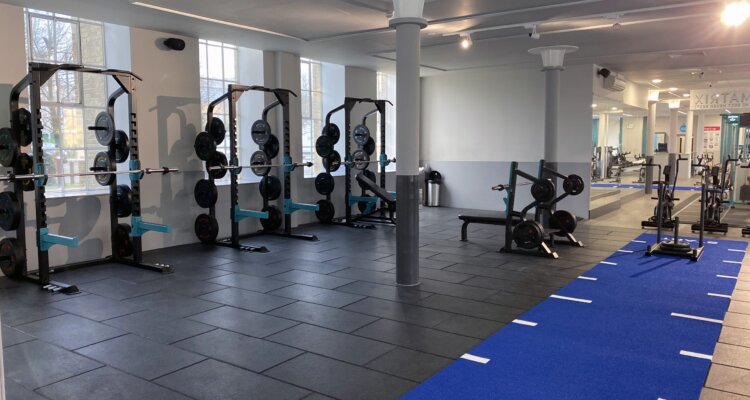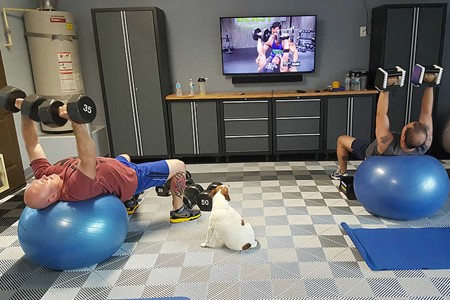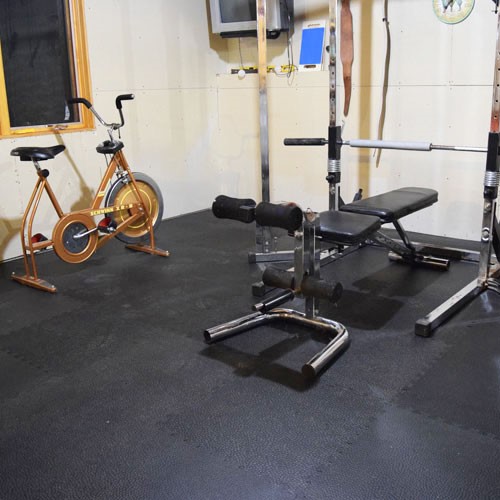A Comprehensive Guide to PVC Mats: Your Durable and Versatile Flooring Solution

Flooring Fitness – A Guide to Choosing the Correct Gym Flooring
When it comes to building a home or commercial gym, choosing the right flooring is crucial. The right gym flooring can help protect the subfloor, provide a safe and comfortable workout environment, and enhance the overall aesthetic of the space.
In this guide, we will walk you through the factors to consider when selecting the perfect gym flooring.
Flooring Fitness: Factors to Consider
Material: Flooring Fitness
- The first consideration when choosing gym flooring is the material. Some common materials used in gym flooring include rubber, foam, vinyl, and carpet. Each material has its own unique properties that make it suitable for specific types of exercises.
- Rubber is the most popular choice for gym flooring because it is durable, slip-resistant, and easy to clean. Rubber flooring comes in a variety of thicknesses and densities, making it suitable for everything from high-impact workouts to weightlifting.
- Foam is another popular choice for gym flooring because it is lightweight, shock-absorbing, and provides a soft surface for floor exercises like yoga and Pilates. Foam flooring is also easy to install and comes in a variety of colors and patterns.
- Vinyl is a durable and low-maintenance option for gym flooring. It is easy to clean and resists moisture, making it a great choice for high-traffic areas like weight rooms and locker rooms. Vinyl flooring also comes in a variety of styles and can be customized to fit any gym’s aesthetic.
- Carpet is a comfortable and cost-effective option for gym flooring. It provides a soft surface for floor exercises and can help reduce noise levels in the gym. However, carpet is not as durable as other flooring options and can be difficult to clean.

Thickness: Flooring Fitness
- The thickness of the gym flooring is another important factor to consider. Thicker flooring provides better shock absorption and can help reduce the risk of injury during high-impact workouts. However, thicker flooring can also be more expensive and may not be suitable for all types of exercises.
- For weightlifting areas, a thickness of 8mm to 10mm is recommended to protect the subfloor from damage caused by dropped weights.
- For cardio areas, a thickness of 6mm to 8mm is typically sufficient. Foam flooring, on the other hand, can be as thin as 6mm and still provide adequate shock absorption for low-impact workouts.
Texture: Flooring Fitness
- The texture of the gym flooring is another important consideration. A textured surface provides better traction and can help prevent slips and falls during workouts. However, too much texture can make the surface difficult to clean and may cause discomfort during floor exercises.
- Rubber flooring is naturally slip-resistant and provides a textured surface without being too abrasive. Vinyl flooring can also be textured to provide better traction, but care should be taken to ensure that the texture is not too rough.
Installation: Flooring Fitness
- The installation process for gym flooring can vary depending on the material and thickness of the flooring. Rubber flooring, for example, can be installed using interlocking tiles or rolled out in sheets. Foam flooring is typically installed using puzzle-style interlocking tiles that can be easily assembled and disassembled.
- Vinyl flooring is usually installed using adhesive or can be loose-laid for easy removal. Carpet tiles are also a popular option for gym flooring because they can be easily replaced if damaged.

Maintenance:Flooring Fitness
- Finally, the maintenance requirements for gym flooring should be considered. Rubber flooring is the easiest to maintain because it is naturally resistant to moisture and can be easily cleaned using a damp mop or vacuum.
- Foam flooring can also be easily cleaned using a damp mop or vacuum, but care should be taken not to use harsh chemicals that can damage the surface.
- Vinyl flooring should be cleaned regularly using a damp mop and mild detergent. Carpet flooring should be vacuumed regularly to remove dirt and debris.
This Post Has 0 Comments